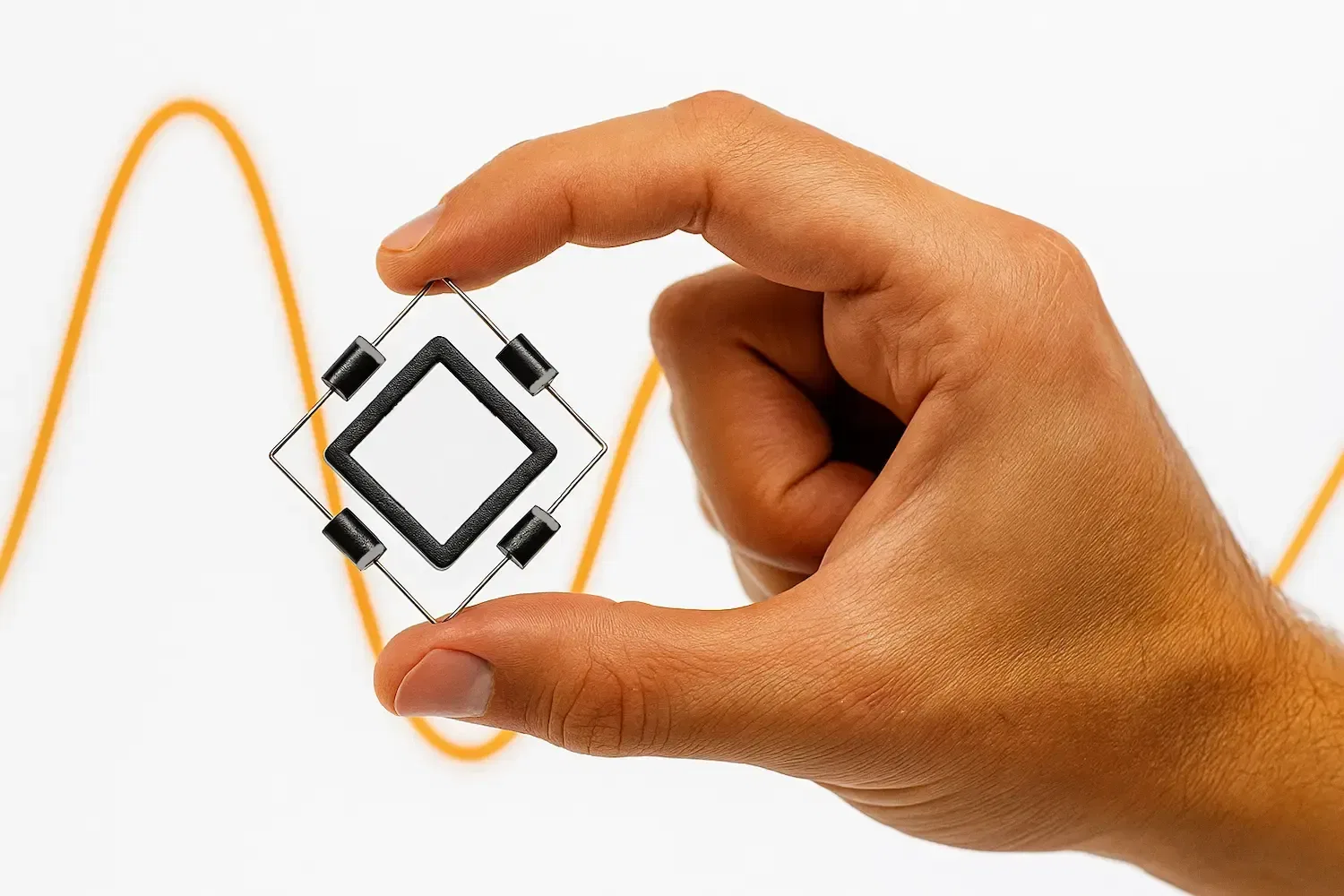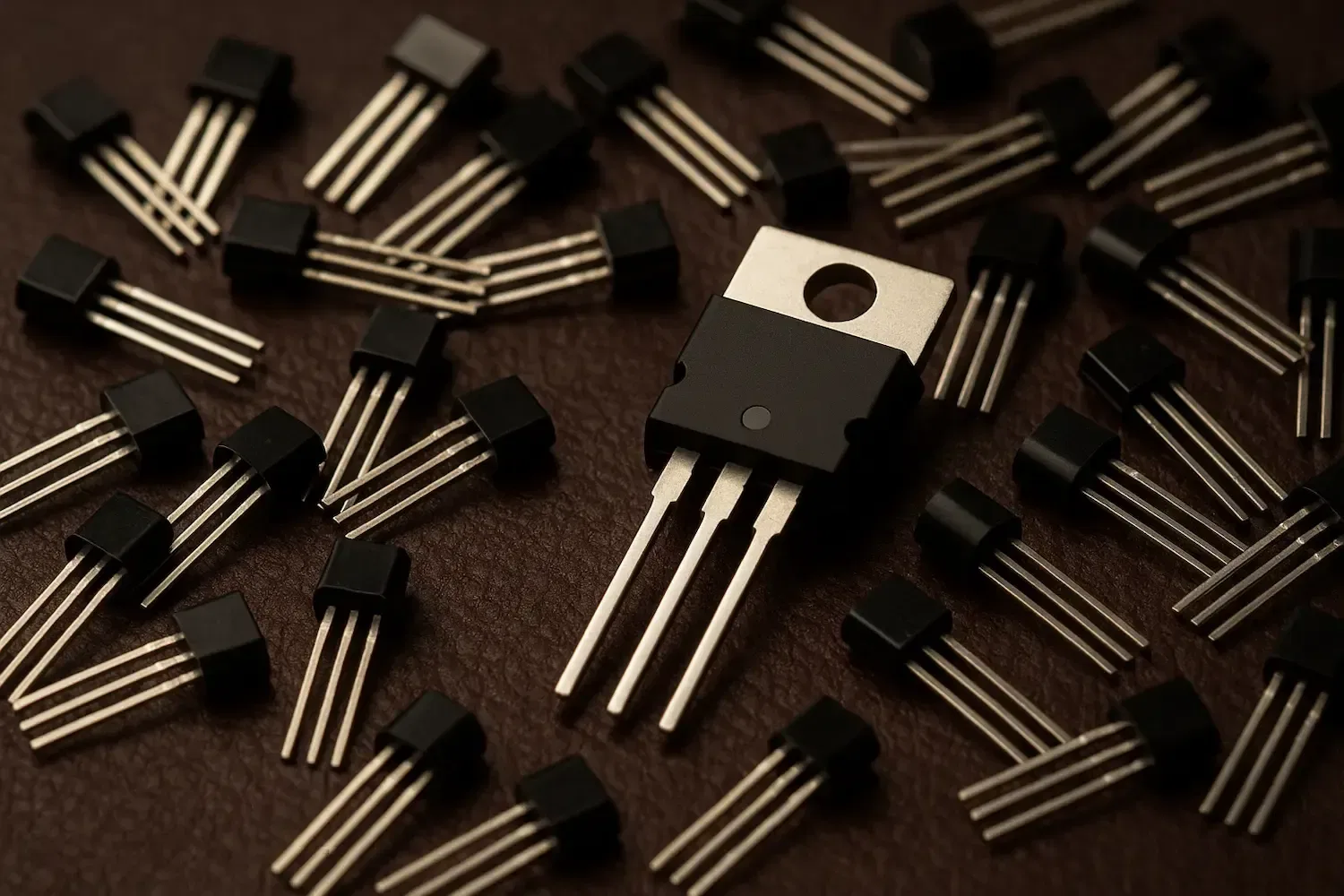Introduction to Diodes

Introduction to Diodes
A diode is one of the most fundamental electronic components. It is a semiconductor device that allows current to flow in one direction while blocking it in the opposite direction. This property makes diodes essential in various electronic circuits, ranging from power supplies to signal processing.
Diodes are made from semiconductor materials such as silicon (Si) and germanium (Ge), which are doped to create a PN junction. This PN junction forms the core of the diode's functionality, enabling it to act as a one-way valve for electrical current.
Types of Diodes and Their Functions
There are several types of diodes, each designed for specific applications:
1. Rectifier Diodes
- Function: Converts alternating current (AC) to direct current (DC) in power supplies.
- Example: 1N4007 (used in power adapters and voltage rectifiers).

2. Zener Diodes
- Function: Maintains a stable voltage across circuits by allowing current to flow in the reverse direction when a specific voltage is reached.
- Example: Used in voltage regulation and overvoltage protection.

3. Light Emitting Diodes (LEDs)
- Function: Converts electrical energy into light when forward-biased.
- Example: Used in indicator lights, displays, and general illumination.

4. Schottky Diodes
- Function: Offers fast switching and low forward voltage drop, making them ideal for high-speed applications.
- Example: Used in RF circuits and power rectifiers.

5. Photodiodes
- Function: Converts light energy into electrical current, used in sensors and optical communication.
- Example: Found in solar panels and infrared receivers.

Applications of Diodes
Diodes are widely used in modern electronics. Some common applications include:
- Power Rectification: Converts AC to DC in power supply circuits.
- Voltage Regulation: Zener diodes help maintain a stable voltage in electronic circuits.
- Signal Demodulation: Extracts information from modulated signals in radio receivers.
- Lighting and Displays: LEDs are used in digital displays, indicator lights, and street lighting.
- Solar Energy Conversion: Photodiodes and solar cells convert light into electricity.
- High-Frequency Applications: Schottky and tunnel diodes are used in RF and microwave circuits.
- Electrostatic Discharge Protection: Protects sensitive electronic components from voltage spikes.
Identifying Anode and Cathode on Actual Diodes
To identify the cathode and anode of a diode, both symbolic and physical indicators can be used. In circuit diagrams, the diode symbol features a triangle pointing toward a line — the triangle represents the anode (+), and the line denotes the cathode (–). On actual diodes, the cathode is often marked with a distinct band. In through-hole glass diodes (like the 1N4148), this is a painted or etched ring near one end. For black plastic rectifier diodes (like the 1N4007), the band is usually a grey or silver stripe. Surface-mount diodes (SMD), such as the SS24, typically have a bar or line printed on one side of the package to indicate the cathode.
In the next image , the top section shows the diode symbol with "Cathode" and "Anode" clearly labeled. Just below, a glass diode with an orange body and a black band on the left marks the cathode. The middle diode is a larger cylindrical type with a grey stripe, again indicating the cathode. The bottom diode is an SMD package labeled SS24, with a white bar on the left edge — this is the cathode marker. These visible markings help ensure correct polarity when assembling or troubleshooting circuits.

Practical Example: Half-Wave Rectifier
A common and practical application of a diode is in rectification, which is the process of converting alternating current (AC) into direct current (DC). The simplest form of rectification is the half-wave rectifier, which uses a single diode to block one half of the AC cycle, allowing only the positive (or negative) half to pass through.
In the circuit shown next , the AC input voltage (Vin) is connected in series with a diode (D) and a load resistor (R). During the positive half of the AC cycle, the diode becomes forward biased and conducts current, allowing voltage to appear across the resistor. However, during the negative half of the cycle, the diode becomes reverse biased and blocks current flow, resulting in zero output voltage.
As a result, the output voltage (Vout) appears as a series of positive half-sine pulses, as illustrated to the right of the circuit. This unidirectional (but pulsating) signal is referred to as pulsating DC, and although it is not smooth, it is suitable for some simple DC applications. To reduce the ripple and create a more stable DC output, additional components such as capacitors or voltage regulators are often added — as seen in full-wave rectifier or filtered rectifier designs.
This circuit highlights one of the most fundamental uses of diodes in power supply design and illustrates how a basic component can achieve rectification with minimal complexity.

Conclusion
Diodes are indispensable components in electronics, serving various roles in rectification, signal modulation, voltage regulation, and lighting. Understanding their different types and functions allows engineers and hobbyists to design efficient and effective electronic circuits. Whether in power supplies, radio communication, or LED displays, diodes continue to be a cornerstone of modern electronic devices.








